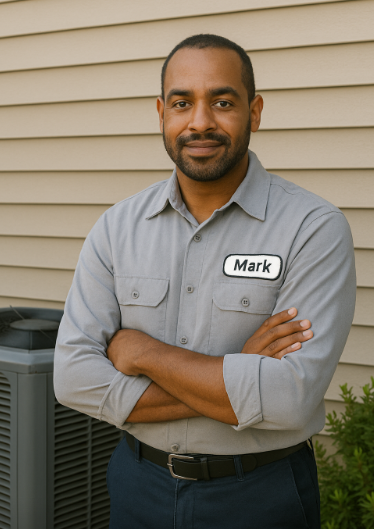Mark Callahan here. If you’re living in a smaller home, studio, or even a dedicated office space, you’ve probably searched for terms like AC unit for 700 sq ft, 600 square feet portable air conditioner, or 700 sq foot portable air conditioner. Choosing the right air conditioning system for a small space isn’t just about staying cool—it’s about efficiency, cost, and long-term reliability.
In this guide, I’ll cover:
-
How to size an AC unit for 600–700 sq ft spaces
-
Portable AC options and their pros and cons
-
When a larger, permanent solution like the Goodman 3‑Ton 14.5 SEER2 R‑32 bundle makes sense
-
Maintenance tips to keep your unit running efficiently
Understanding BTUs and Small-Space AC Units
The cooling capacity of an AC is measured in BTUs (British Thermal Units). For a space between 600 and 700 sq ft, the general recommendation is:
-
600 sq ft: 12,000–14,000 BTUs
-
700 sq ft: 14,000–16,000 BTUs
A 600 square feet portable air conditioner is ideal for apartments, studios, or offices, providing efficient cooling without wasting energy. For slightly larger spaces, like 700 sq ft, you’ll need a 700 sq foot portable air conditioner or a slightly more powerful portable unit.
For a technical guide on BTU sizing, check out Energy Star room AC sizing recommendations.
Portable AC Units for 600–700 sq ft
Portable units are convenient, affordable, and flexible. Here’s what to look for:
-
Cooling Capacity: Ensure the BTUs match your square footage.
-
Energy Efficiency: Look for Energy Star-rated units.
-
Portability: Wheeled units are easier to move between rooms.
-
Noise Levels: Check decibel ratings, especially for bedrooms or offices.
-
Ventilation Requirements: Most portable ACs require venting through a window or wall.
Portable AC units for 600 sq ft can handle smaller living areas comfortably, while 700 sq foot portable air conditioner models provide extra power for mild heat waves or poorly insulated spaces.
When a Central System Might Be Better
While portable ACs are excellent for small spaces, sometimes a permanent solution is more effective. For example, if your home has multiple rooms or you anticipate long-term use, a system like the Goodman 3‑Ton 14.5 SEER2 R‑32 bundle provides:
-
Consistent cooling throughout the home
-
Higher efficiency and lower long-term costs
-
Reduced noise compared to portable units
-
Extended lifespan with proper maintenance
Even if your primary space is 600–700 sq ft, having a full system can handle additional areas or heat loads, which portable units cannot.
Pros and Cons of Portable AC Units
Pros:
-
Easy to install and move
-
Lower initial cost
-
No permanent alterations to your home
-
Great for rental units or temporary spaces
Cons:
-
Limited cooling capacity
-
Requires venting
-
Higher energy cost per BTU compared to a central system
-
Noise can be disruptive in quiet spaces
For a detailed review of portable AC performance, check Consumer Reports portable AC guide.
Energy Efficiency Tips
Whether you choose a portable AC unit for 600 sq ft or a small central system, energy efficiency matters. Here are some tips:
-
Close doors and windows in the cooled space
-
Use curtains or blinds to reduce heat gain
-
Maintain the AC unit regularly
-
Set the thermostat at a comfortable but efficient temperature (around 74–76°F)
For more energy-saving strategies, see Energy.gov air conditioning efficiency tips.
Installation and Ventilation
Proper installation ensures maximum performance:
-
Place portable units near a window for venting
-
Avoid placing units in direct sunlight
-
Ensure proper airflow around the condenser
-
For central systems, professional installation is recommended
For a deep dive into installation best practices, check HVAC School installation tips.
Maintenance for Small AC Units
Regular maintenance is key for both portable and central ACs:
-
Clean filters monthly
-
Wipe down coils and vents
-
Ensure drain pans are clear
-
Schedule professional checkups annually for central systems
Well-maintained units provide better cooling and reduce energy costs.
Common Questions
Q: Can a portable AC really cool 600 sq ft?
A: Yes, provided the BTU rating matches your space. Energy-efficient units are best.
Q: What about a 700 sq ft portable AC?
A: Look for slightly higher BTUs (14,000–16,000) to ensure comfort during hot months.
Q: Should I invest in a Goodman central system for a small space?
A: If you plan to expand or want quieter, more efficient cooling, a properly sized central system is a smart investment.
Q: How often should I maintain a portable AC unit?
A: Monthly filter cleaning and annual coil inspection are recommended.
Conclusion
Choosing the right air conditioner for small spaces like 600–700 sq ft requires balancing cooling capacity, portability, and long-term costs. Portable AC units for 600 sq ft and 700 sq foot portable air conditioner models are ideal for temporary or supplemental cooling, while a central system like the Goodman 3‑Ton 14.5 SEER2 R‑32 bundle offers reliability, efficiency, and comfort for long-term use.







